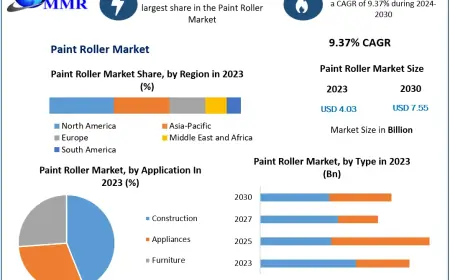Creating Captivating Spaces: Exploring the Ambient Lighting Market
Dive into the dynamic market of ambient lighting and its crucial role in creating captivating spaces.
In 2019, the worldwide ambient lighting market size was $60.8 billion, and it is predicted to advance at a CAGR of 9.2% from 2020 to 2030, to ultimately value $156.5 billion by 2030. This can be attributed to the effective implementation of stringent policies for energy efficiency, rising consumer preference for smart lighting, and skyrocketing demand for energy-efficient lighting solutions. Nonetheless, the outbreak of COVID-19 disrupted the market by not only rupturing the logistical network in many countries, such as China and India, but also postponing the launch of residential projects.
The snowballing demand for smart lighting solutions will spur the ambient lighting market growth. There is a rising integration of LEDs for industrial purposes because of the creative design and energy efficiency. Furthermore, massive LED deployment especially in the residential sector will pave the way for a high revenue generation. The market offers lucrative opportunities to the market players and motivates them to extensively use LED lights in smart home solutions. Moreover, the surge in the requirement for IoT and Industry 4.0 will augment growth in the market.
To receive free sample pages of this report@ https://www.psmarketresearch.com/market-analysis/ambient-lighting-market-report/report-sample
The surging awareness about environmental degradation will lead to the execution of strict policies about the lights’ energy efficiency, which is providing energy and cost savings in numerous sectors. For instance, the U.S. Department of Energy has executed the U.S. Energy Standard for Buildings to create design and related systems. These would reduce greenhouse gas emissions by 841 MMT and save a significant portion of electricity bills, accounting for approximately $125 billion. China had been a major consumer of global power usage, accounting for around 15% of the total power usage, apart from being one of the biggest markets for ambient lighting.
The escalating demand for the LED lighting solutions will drive the ambient lighting market owing to its ability to exhibit an equivalent intensity of light by consuming half the energy of cold cathode fluorescent lamps (CCFLs) and compact fluorescent lamps (CFLs). The annual greenhouse gas emissions are lowered by around 700 MMT on account of the low power consumption. Moreover, the LEDs are neutral and have zero UV radiations emitted, thereby protecting the ozone layer depletion. Because of all these properties, LEDs are more suitable for indoor lighting.
APAC will rule the ambient lighting market in the coming years. The expanding development of residential sectors, particularly in India and China, will go hand in hand with the region's improving automotive industry. The use of ambient lighting in residential structures is increasing as a result of the execution of many government initiatives aimed at providing affordable housing to the public. Furthermore, increased automotive manufacturing in key hubs such as Japan, China, and South Korea will accelerate the use of ambient lighting throughout APAC.
Moreover, APAC is to some of the most populous economies, such as China and India will propel growth in the market. Rising population levels, swift urbanization, higher employment rates, surging disposable income, and consequently rising purchasing power will push the demand for ambient lighting in several sectors.
What's Your Reaction?
 Like
0
Like
0
 Dislike
0
Dislike
0
 Love
0
Love
0
 Funny
0
Funny
0
 Angry
0
Angry
0
 Sad
0
Sad
0
 Wow
0
Wow
0














































